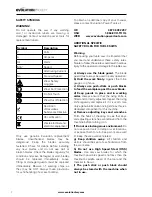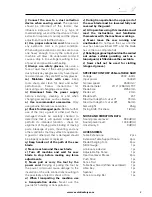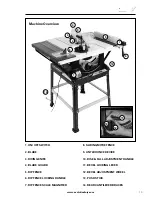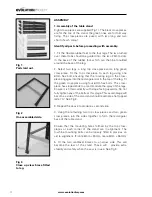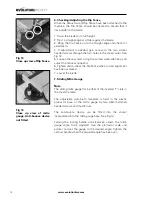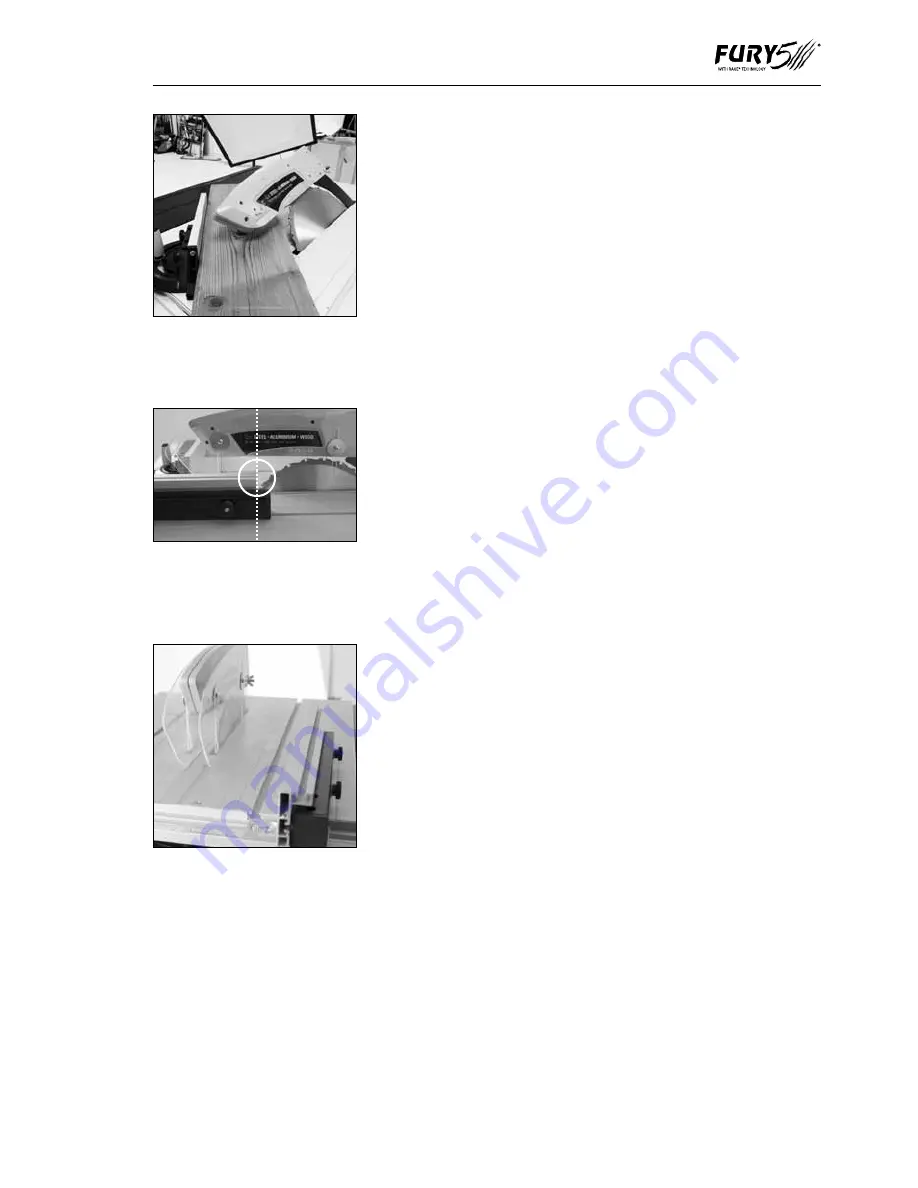
Fig 28
View of machine set for
compound mitre cutting.
Fig 29
View of machine set for
repetitive cutting.
Fig 30
View of machine set for
rip cutting.
20
www.evolutionfury.com
4. Compound mitre cutting
Compound mitre cutting is a combination of mitre cutting and
bevel crosscutting.
Adjust the mitre gauge and the blade to the desired angles.
Lock both in place.
Check that the mitre gauge will pass the saw blade without
fouling. Adjust the mitre gauge faceplate if necessary. See Fig 28.
Index the material against the mitre gauge and make
your cut.
5. Repetitive crosscutting
Repetitive cutting is cutting a number of pieces to the same
length without having to mark out each piece.
Note
We recommend that repetitive cross-cutting is carried out with
the mitre gauge positioned on the LH side of the machine,
with the rip fence on the RH side of the machine. See Fig 29.
The rip fence can be used as a length stop if it is properly set
and adjusted.
Note
Align the back of the fence with the front of the saw blade.
This will allow clearance for the material as it passes through
the saw blade.
Index the material to be cut against the mitre gauge and the rip
fence. Hold the material and mitre gauge with your left hand.
Gently push the workpiece through the saw. Use a push stick,
if necessary, in your right hand to guide the workpiece on the
RH side of the blade.
6. Rip cutting
Rip cutting is cutting along the length of a piece of material
rather than across it. See Fig 30.
Rip cutting should always be done with the rip fence set
to the desired width and normally on the RH side of the
machines table.
The mitre gauge is not required for this operation, and should
be stored safely off the machine for future use.


